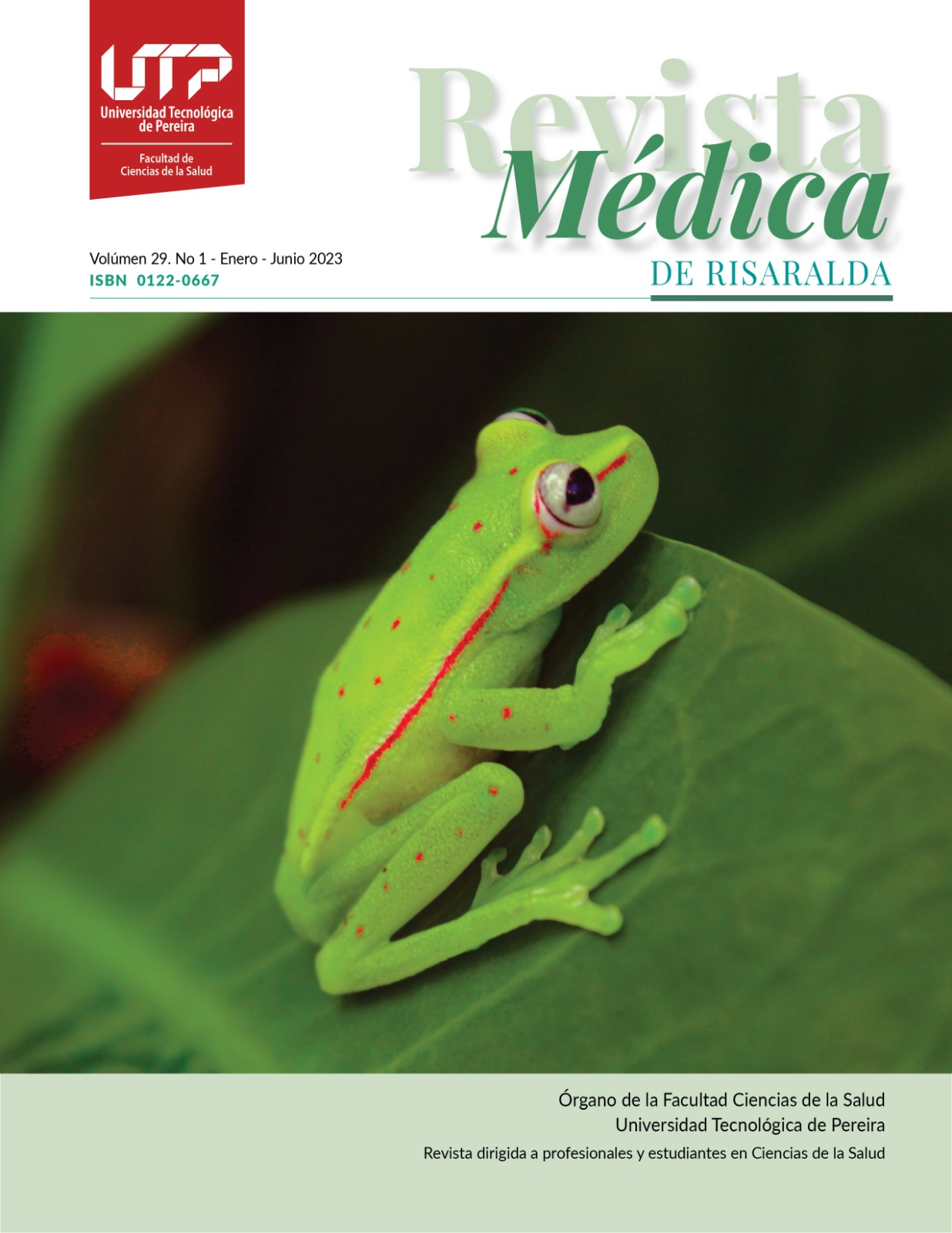Methylene blue, an option for minimally invasive pre-procedural colorectal cancer marking. Case Report
DOI:
https://doi.org/10.22517/25395203.25097Keywords:
Methylene Blue, Colonic Neoplasms, Endoscopy, Minimally Invasive Surgical ProceduresAbstract
Colorectal cancer is a common pathology, causing approximately 861,000 deaths a year. We have a 50-year-old male, with arterial hypertension and type II diabetes mellitus, with a diagnosis of neoplasia in the descending colon, which was performed minimally invasive procedure, after tumor marking with methylene blue by means of endoscopy of lower digestive tracts. Adequate postoperative period, without complications. The treatment of choice for colorectal cancer without metastasis is oncological exeresis. Currently the recommended surgical management is by means of a minimally invasive procedure, however, it is a challenge since in some cases the identification of the lesion is difficult and additionally requires a pronounced learning curve. Therefore, we use methylene blue for the marking of the tumor after the procedure, with excellent results, without complications. Methylene blue tumor marking prior to the minimally invasive procedure is safe, useful, inexpensive, and low risk.
Downloads
References
Pointet A, Taieb J. Cáncer de colon. Colloids Surfaces A Physicochem Eng Asp [Internet]. 2017;21(1):1–7. Available from: http://dx.doi.org/10.1016/S1636-5410(16)81792-4
Ferlay J, Soerjomataram I, Dikshit R, Eser S, Mathers C, Rebelo M, et al. Cancer incidence and mortality worldwide: sources, methods and major patterns in GLOBOCAN 2012. Int J cancer [Internet]. 2015 Mar 1 [cited 2019 Sep 20];136(5):E359-86. Available from: http://www.ncbi.nlm.nih.gov/pubmed/25220842
Sistema de Información de Cáncer en Colombia [Internet]. [cited 2021 Feb 2]. Available from: https://www.infocancer.co/portal/#!/filtro_incidencia/
Global Cancer Observatory [Internet]. [cited 2021 Feb 2]. Available from: https://gco.iarc.fr/
, et al. Localización y clínica asociada al cáncer de colon. Hospital Nacional Arzobispo Loayza: 2009 - 2013. Horiz Médico. 2015;15(2):49–55.
Lee GH, Malietzis G, Askari A, Bernardo D, Al-Hassi HO, Clark SK. Is right-sided colon cancer different to left-sided colorectal cancer? - A systematic review. Eur J Surg Oncol [Internet]. 2015;41(3):300–8. Available from: http://dx.doi.org/10.1016/j.ejso.2014.11.001
Vogel JD, Eskicioglu C, Weiser MR, Feingold DL, Steele SR. The American society of colon and rectal surgeons clinical practice guidelines for the treatment of colon cancer. Dis Colon Rectum. 2017;60(10):999–1017.
Dong B, Luo Z, Lu J, Yang Y, Song Y, Cao J, et al. Single-incision laparoscopic versus conventional laparoscopic right colectomy: A systematic review and meta-analysis. Int J Surg [Internet]. 2018;55(1):31–8. Available from: https://doi.org/10.1016/j.ijsu.2018.05.013
Mathis KL, Nelson H. Controversies in laparoscopy for colon and rectal cancer. Surg Oncol Clin N Am. 2014;23(1):35–47.
Brahma B, Putri RI, Sari L, Karsono R, Purwanto DJ, Gautama W, et al. The application of 1% methylene blue dye as a single technique in breast cancer sentinel node biopsy. J Vis Exp. 2019;2019(148):1–6.
Cabrera S, Bebia V, Franco-Camps S, Forcada C, Villasboas-Rosciolesi D, Navales I, et al. Technetium-99m-indocyanine green versus technetium-99m-methylene blue for sentinel lymph node biopsy in early-stage endometrial cancer. Int J Gynecol Cancer. 2020;30(3):311–7.
Bara T, Gurzu S, Jung I, Borz C, Banias L, Bara T. Sentinel node biospy using intravital blue dye. Medicine (Baltimore). 2019;98(12):e14951.
Bottaro, Larsen B. 基因的改变NIH Public Access. Bone. 2008;23(1):1–7.
Kiesslich R, Fritsch J, Holtmann M, Koehler HH, Stolte M, Kanzler S, et al. Methylene blue-aided chromoendoscopy for the detection of intraepithelial neoplasia and colon cancer in ulcerative colitis. Gastroenterology. 2003;124(4):880–8.
Repici A, Wallace MB, East JE, Sharma P, Ramirez FC, Bruining DH, et al. Efficacy of Per-oral Methylene Blue Formulation for Screening Colonoscopy. Gastroenterology [Internet]. 2019;156(8):2198-2207.e1. Available from: https://doi.org/10.1053/j.gastro.2019.02.001
Downloads
-
Vistas(Views): 1198
- PDF (Español (España)) Descargas(Downloads): 253
- PDF Descargas(Downloads): 270
Published
Versions
- 2023-07-13 (2)
- 2023-06-29 (1)
How to Cite
Issue
Section
License
Cesión de derechos y tratamiento de datos
La aceptación de un artículo para su publicación en la Revista Médica de Risaralda implica la cesión de los derechos de impresión y reproducción, por cualquier forma y medio, del autor a favor de Facultad de Ciencias de la Salud de la Universidad Tecnológica de Pereira. 1995-2018. Todos los derechos reservados ®
por parte de los autores para obtener el permiso de reproducción de sus contribuciones. La reproducción total o parcial de los trabajos aparecidos en la Revista Médica de Risaralda, debe hacerse citando la procedencia, en caso contrario, se viola los derechos reservados.
Asimismo, se entiende que los conceptos y opiniones expresados en cada trabajo son de la exclusiva responsabilidad del autor, sin responsabilizarse ni solidarizarse, necesariamente, ni la redacción, ni la editorial.
Es responsabilidad de los autores poder proporcionar a los lectores interesados copias de los datos en bruto, manuales de procedimiento, puntuaciones y, en general, material experimental relevante.
Asimismo, la Dirección de la revista garantiza el adecuado tratamiento de los datos de carácter personal



